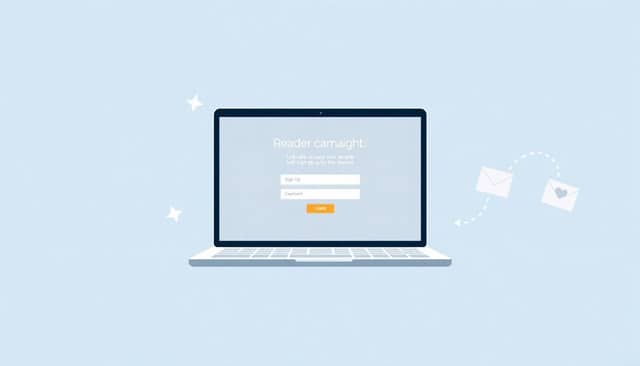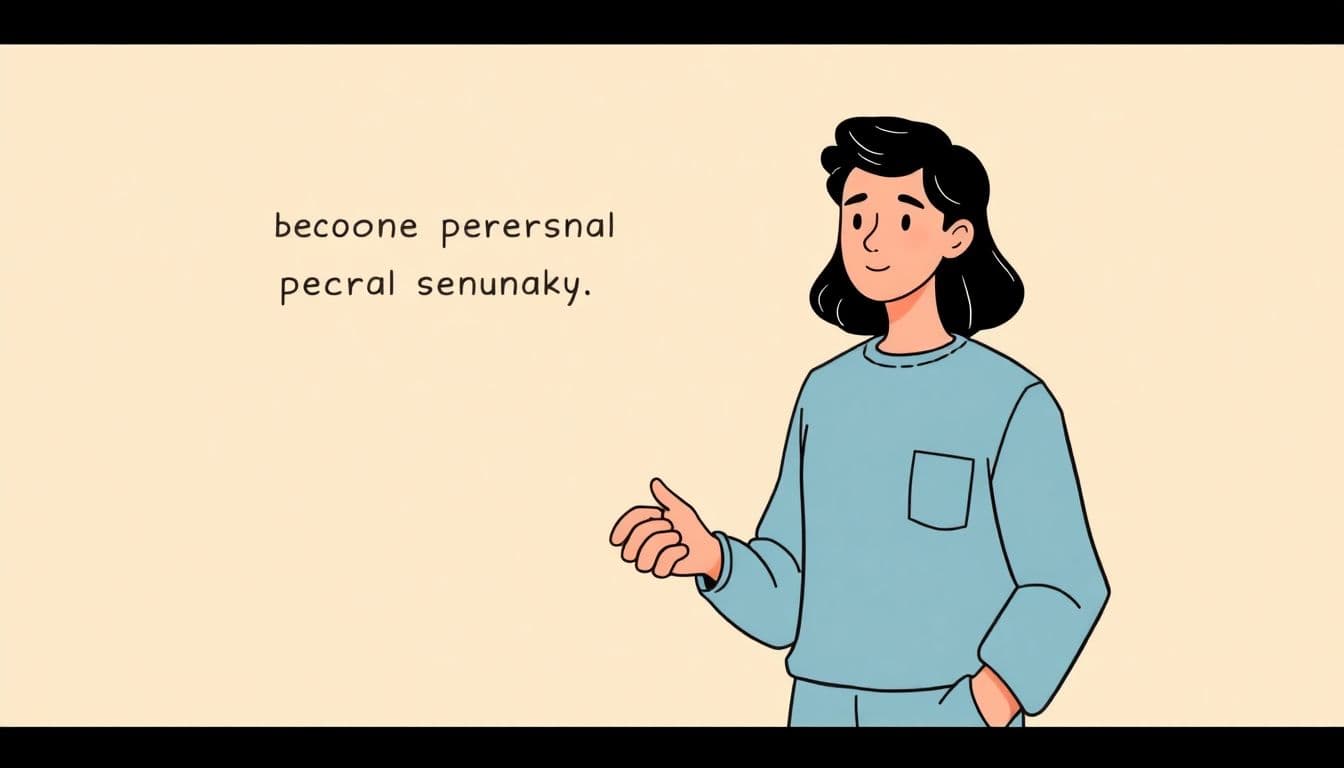Table of Contents
Creating a reader magnet sequence can feel overwhelming, especially if you’re not sure where to start. But don’t worry—I’m here to help you turn a simple freebie into a steady stream of new readers. Keep reading, and I’ll show you how to set up an appealing, easy-to-access gift that keeps your audience engaged and eager for more.
If you follow these steps, you’ll have a proven plan to attract and nurture your readers automatically. From choosing the right free offer to crafting emails that really connect, this approach will make growing your audience less of a chore and more of an adventure. Ready to build your reader magnet sequence and start seeing results? Let’s go!
Key Takeaways
Key Takeaways
- Creating a reader magnet helps attract new subscribers and build trust. Pick a freebie that’s useful and relevant to your audience, like a checklist or short story. Make sure it’s easy to access and download with minimal steps. Set up automated tools to deliver the free resource immediately after sign-up. Craft a friendly email follow-up sequence that adds value and nurtures the relationship. Track engagement stats and adjust your approach to improve results. A well-designed sequence keeps readers interested, leading to more loyalty and sales. Before launching, review every step to ensure smooth delivery and maximize growth.

1. Define What a Reader Magnet Is and Why It Matters
A reader magnet is a free resource you give away to attract new subscribers or readers to your email list or website. Think of it as a little gift that incentivizes people to sign up and start engaging with your content. In the crowded world of publishing and online marketing, having a solid reader magnet is key to standing out. It matters because it helps you build a loyal audience and warms up potential customers before they even buy your books or products.
Giving away a well-crafted magnet increases your chances of growing your email list, which is one of the most direct ways to connect with your audience. Remember, in 2025, over a billion people are expected to read ebooks, and many prefer personalized, relevant content. A strong magnet can tap into that trend, drawing the right readers to your work and establishing your reputation.
Common types of reader magnets include free ebooks, cheat sheets, checklists, quizzes, or video guides. The goal is to offer something genuinely valuable that solves a problem or answers a question your target audience cares about. When your magnet hits the mark, it doesn’t just bring in subscribers—it keeps them engaged and eager for your next offer.
2. Select a Valuable Free Offer for Your Audience
The heart of a successful reader magnet is relevance. You want to pick a freebie that your audience actually wants and finds useful. For example, if you write fiction, offering a free short story or a behind-the-scenes look at your writing process can work well. If you focus on non-fiction, consider creating a helpful checklist or a beginner’s guide related to your niche.
Research shows that interactive tools like assessment quizzes or video tutorials will likely outperform simple ebooks in 2025. These options engage your audience more deeply and encourage sharing, which can amplify your reach. Think about what your ideal reader struggles with—then give them a solution or insight they can’t resist.
Keep in mind, giving away a full ebook can be highly effective, especially if it’s a complete, high-quality resource. It demonstrates your expertise and builds trust. For instance, offering a free chapter of your upcoming book can pique curiosity and lead to eventual sales.
Make sure your free offer aligns tightly with your overall brand or book series. When the magnet feels relevant and valuable, your new followers will be more likely to convert into loyal fans or customers.
3. Make Your Reader Magnet Easy to Access and Download
Simplicity is key here. Your magnet should be just a few clicks away from being downloaded. The more hoops someone has to jump through, the higher the chances they’ll abandon ship. Use clear calls to action, like “Download Your Free Guide” button, and keep forms short—name and email are enough most of the time.
Place your sign-up form prominently on your website, blog posts, or landing pages. Using tools like **ConvertKit** or **Mailchimp** makes it simple to set up automated delivery once someone signs up. Also, host your magnet on reliable platforms like Dropbox or Google Drive, so downloads are quick and smooth.
Testing is important—try downloading your own magnet from different devices and browsers to make sure it’s easy. Plus, consider offering your magnet in multiple formats, such as PDF, EPUB, or even audio, to cater to diverse preferences. Making it simple to access and download encourages more sign-ups and leaves a positive first impression.

4. Set Up Tools to Deliver Your Magnet Automatically
Picking the right tools can make or break your reader magnet campaign.
Platforms like best website builders for authors or email marketing services such as Mailchimp and ConvertKit simplify this process.
They let you create landing pages where readers can sign up easily.
Set up automation to send your magnet immediately after someone joins your list—no manual work needed.
Tools like interactive ebook creators or file hosting services such as Dropbox or Google Drive ensure quick downloads.
Work on streamlining your process so new subscribers get their freebie without delay.
Test your setup by signing up yourself from various devices to find and fix any hiccups.
The goal is to make access as smooth as possible—think of it as rolling out the red carpet for your new readers.
If you want to stay ahead, look into AI-powered marketing solutions that can automate follow-up emails and personalize user experience, boosting engagement and conversion rates.
5. Create an Email Sequence to Follow Up with Your Readers
A good follow-up email series is key to turning subscribers into fans.
Start with a warm welcome message thanking them for joining and remind them of what they signed up for.
Follow that with a series of helpful emails that add value—tips, behind-the-scenes stories, or exclusive insights related to your niche.
Keep these emails short, friendly, and easy to digest—no one wants a novel when they just signed up.
Spacing them out over a few days or a week helps keep your brand top of mind without overwhelming.
Use clear, direct language to encourage replies or actions, like checking out your latest book or signing up for a workshop.
Embed your Call to Action (CTA) naturally—invitations to download the magnet, share feedback, or connect on social media.
Test different sequences to see what works best—sometimes a little variation can boost open rates by quite a bit.
Remember, your goal is to build a relationship, so treat your emails like a chat with a friend, not a sales pitch.
This approach creates trust and encourages readers to stay tuned for more of your content and offers.
6. Write and Schedule Your Email Series for Best Engagement
Planning your email timing can make a big difference.
Use scheduling tools like Mailchimp or ConvertKit to set your emails up in advance—no more manual sending every day.
Aim for a mix of content: some informative, some personal, and a few promotional, so your audience doesn’t get bored.
A good rule of thumb is to space emails 2-4 days apart, giving readers time to engage without feeling spammed.
Pay attention to open rates and click-through data—if a particular email underperforms, tweak the subject line or content.
Personalize your emails with their name or a relevant detail if possible—this increases engagement and trust.
Don’t forget to include simple CTAs like “Read more,” “Check this out,” or “Download your free resource.”
Always preview your emails on mobile devices—most people read on their phones—so readability matters.
Finally, keep a running calendar of your email schedule; consistency helps turn casual subscribers into loyal followers.
7. Personalize Your Emails and Use Clear Calls to Action
People respond better when emails feel tailored to them.
Use your email platform’s personalization tags to address subscribers by name or reference their interests.
Share a story or tip that’s relevant to your audience to make your message feel real.
Avoid overly salesy language and focus on building a connection—think of it like chatting with a friend.
Be clear about what you want from your readers—whether it’s reading a new book, joining a webinar, or sharing your content.
Your CTA should stand out—use buttons or bold text—and be specific, like “Download your free checklist now” or “Join our upcoming webinar.”
Keep your buttons and links easy to find and click, especially on mobile devices.
Test different CTA phrases and placements to find what resonates most.
Personalized, straightforward emails with clear next steps will keep your subscribers engaged and more likely to act.
8. Track Engagement and Adjust Your Sequence for Better Results
Watching how your emails perform helps you learn what your readers like.
Monitor open rates, click-through rates, and unsubscribes regularly.
If a particular email isn’t getting opened, try changing the subject line or sending it at a different time.
If clicks are low, experiment with different CTAs or offer more compelling content.
Tools like Mailchimp or ConvertKit make it easy to see these metrics at a glance.
A/B testing different versions of your emails can show you what language or offers work best.
Don’t be afraid to tweak your series—sometimes small changes improve results dramatically.
Pay attention to feedback or replies from your readers—they can guide your future content.
Adjust your schedule based on data—maybe some days generate more engagement than others.
The bottom line: keep learning from your data and refining your approach to grow a loyal audience that believes in your work.
9. Benefits of Using a Well-Designed Reader Magnet Sequence
A good sequence can do wonders for your author platform or business.
First, it helps you build trust and establish a relationship with new followers.
When people receive consistent, valuable messages, they’re more likely to stick around and buy your work later.
It also saves you time—automation means you set it up once and let it run.
Plus, a thoughtful sequence nurtures your readers, turning casual visitors into lifelong fans and customers.
Data from 2025 shows that interactive and personalized magnet strategies outperform traditional ebooks in driving engagement.
A well-crafted campaign can also boost word-of-mouth—subscribers tend to share freebies or recommend you if they find your content helpful.
Finally, this approach can generate steady, predictable growth, making your marketing less stressful and more effective overall.
10. Check Off Steps to Launch Your Reader Magnet Campaign
Before going live, review this quick checklist:
1. Have you created a valuable magnet that truly resonates with your target audience?
2. Is your magnet easy to download with minimal steps?
3. Did you set up your tools for automatic delivery and landing page?
4. Have you prepared your email sequence to welcome and nurture new subscribers?
5. Are your emails scheduled for times when your audience is most likely to engage?
6. Have you personalized your messages and crafted clear CTAs?
7. Did you test everything from sign-up forms to download links on multiple devices?
8. Are you tracking performance metrics from the start?
9. Do you have a plan for adjusting your sequence based on data?
10. Are you ready to promote your magnet through social media or relevant communities?
Once all these steps are complete, you can launch confidently, knowing your campaign is set for success.
With over a billion ebook consumers globally in 2025 and steady growth planned through 2029, having a solid reader magnet and follow-up sequence helps you make the most of that expanding market.
Remember, the key is offering value, making access simple, and staying flexible with your approach.
Happy launching!
FAQs
A reader magnet is a free offer that attracts new readers to your work. It helps grow your email list and encourages engagement by providing value upfront, making it easier to build relationships with your audience.
Select a free offer that aligns with your audience’s interests and provides real value, such as a short guide, checklist, or sample chapter related to your niche or genre.
Use clear, direct links and ensure your landing page is simple and mobile-friendly. Hosting your magnet on reliable platforms makes it quick and straightforward for readers to get your offer.
Automation ensures readers receive your magnet immediately after sign-up, saves time, and helps maintain a professional experience by streamlining the process without manual intervention.



